 To launch labAlive simulation applications you need a Java Runtime Environment supporting Java Web Start on your system. Here you can get more information about installing the right Java version.
To launch labAlive simulation applications you need a Java Runtime Environment supporting Java Web Start on your system. Here you can get more information about installing the right Java version.
A composite signal consists of several message channels carrying music, speech, text, and noise signals. To extract the essential information, demodulation techniques like AM, FM, QAM, and SSB must be utilized.

SSB demodulation
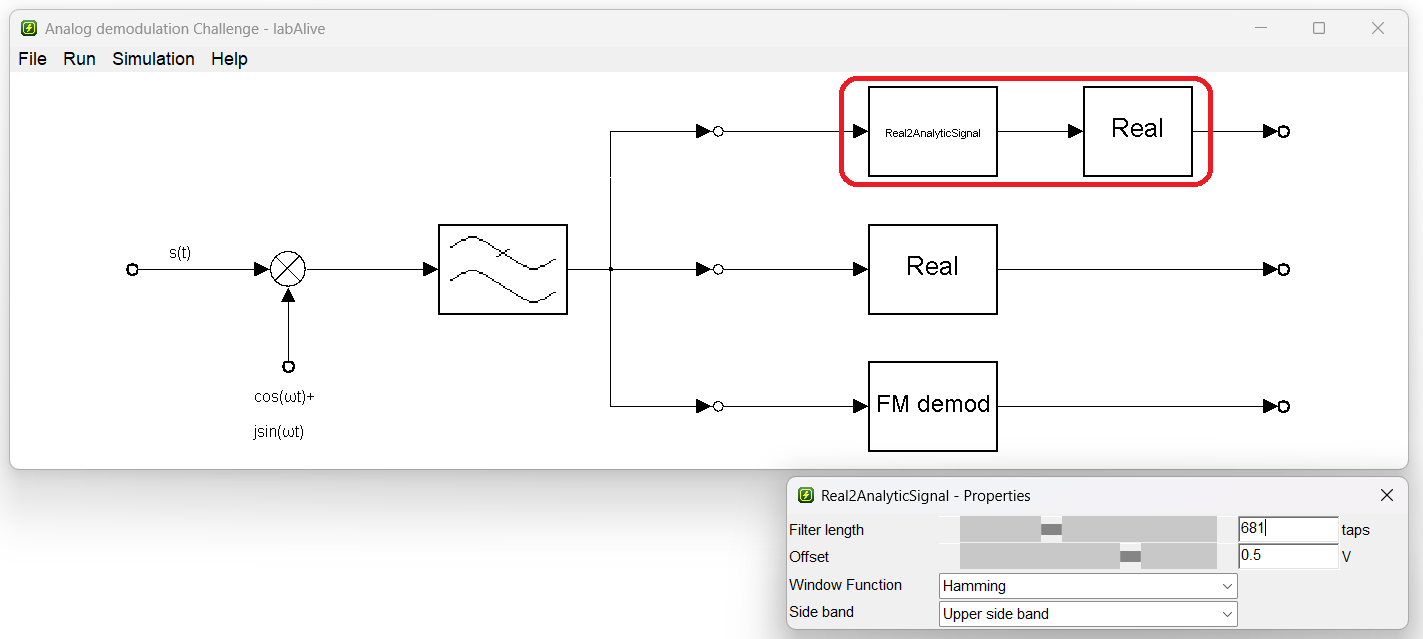
For the single-sideband (SSB) modulation the phasing method is used. The phasing method uses complex IQ processing to resolve the superposition of lower and upper sideband. The Hilbert transformer filters the Q component and shifts it by 90�, to select a certain sideband.
For more information: SSB modulator
Analog QAM demodulation
The Analog QAM (Quadrature Amplitude Modulation) is a technique in which the modulation is a combination of AM and phase shifting.
QAM is available in "analog" and "digital" form. In this certain case we use the analog QAM.
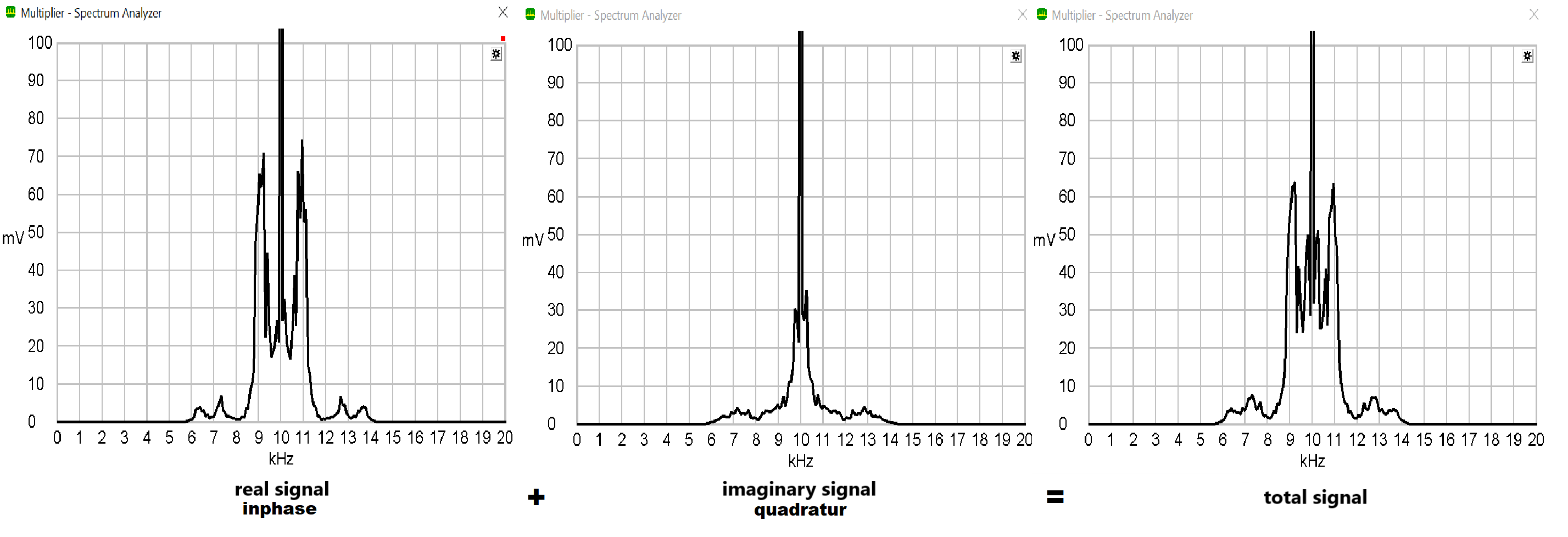
This example shows an analog QAM signal generated with the program. Here you can see two signals in inphase and quadrature. The quadrature signal has a 90 degree phase rotation to the real signal. The resulting combined modulated signal (complex) looks like a conventional double-sideband suppressed carrier of AM, but in the case of QAM each of the two sidebands carry different information.
AM demodulation
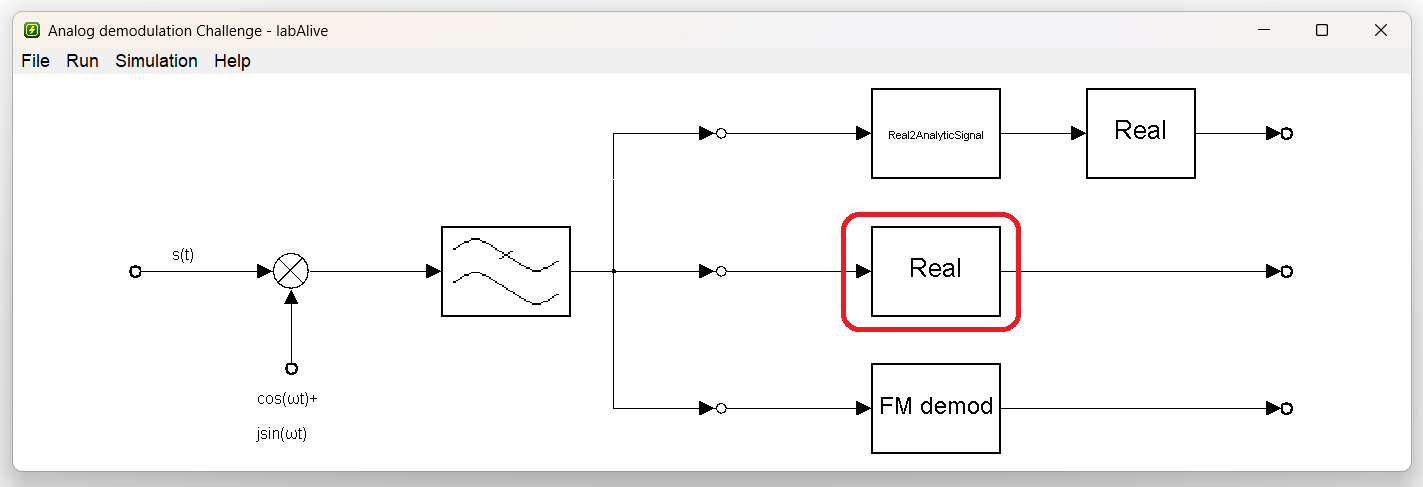
For the AM demodulation a receive filter has to be used. Therefore you can open the properties for the filter by clicking on the marked box.
For more information: AM modulator
FM demodulation
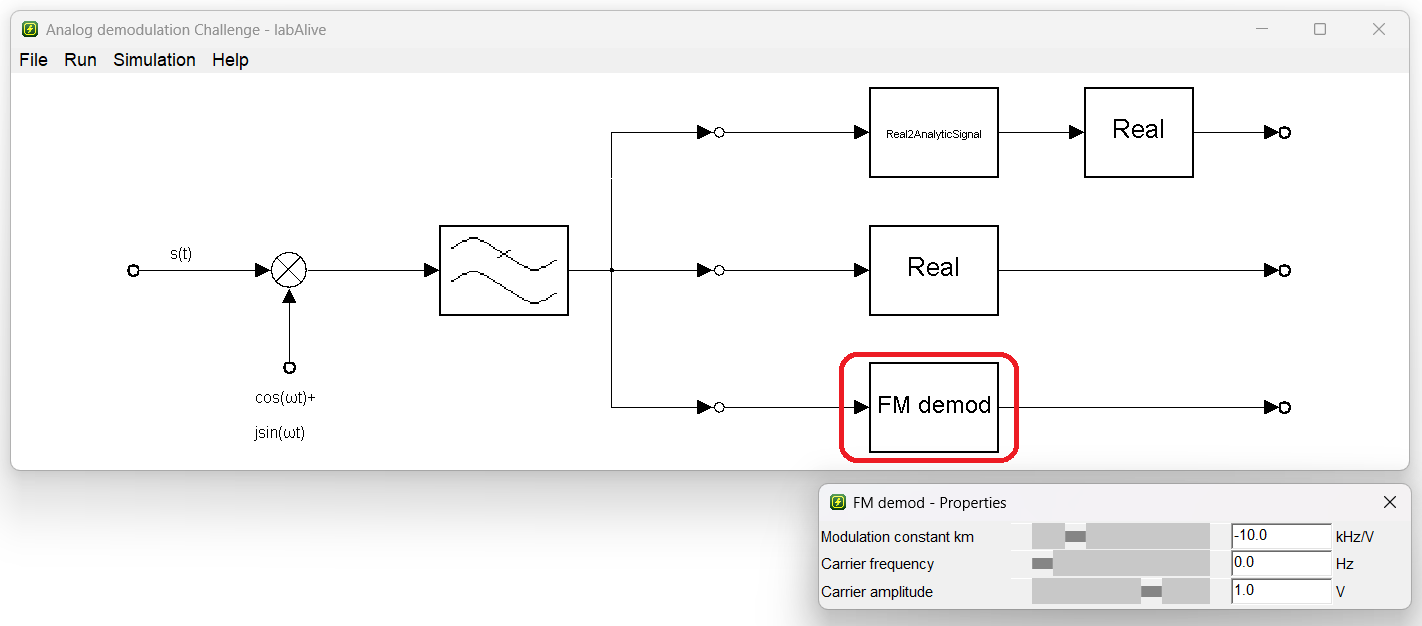
For the FM demodulation the FM demodulator has to be used. Therefore you can open up its properties by clicking on the marked box.
For more information: FM modulator
The received signal consists of four channels, your task is to demodulate the different channels to get its audio signal. Its is emphasized that one channel can also consist of two subchannels. When the app is started, one of the three signals that need to be demodulated is already set as input. Furthermore, a sample file from server can also be imported via the signal generator menu shown below.
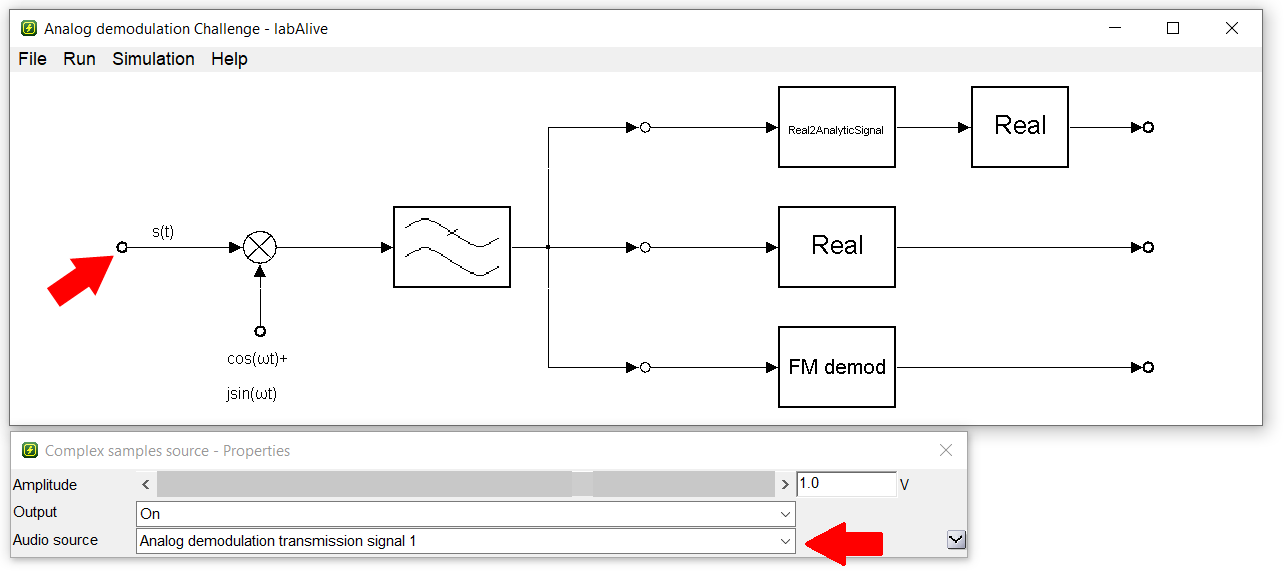
Channel Selection

Example
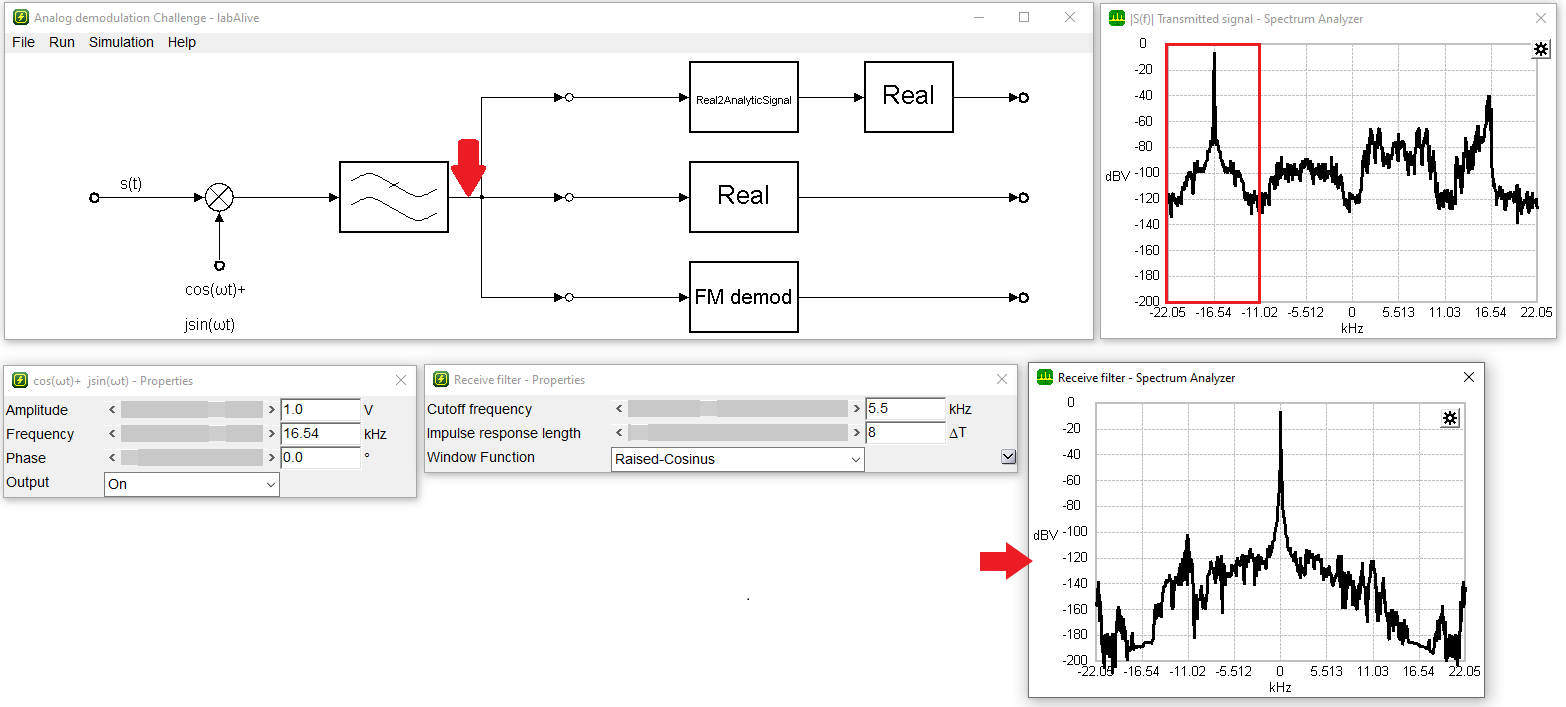
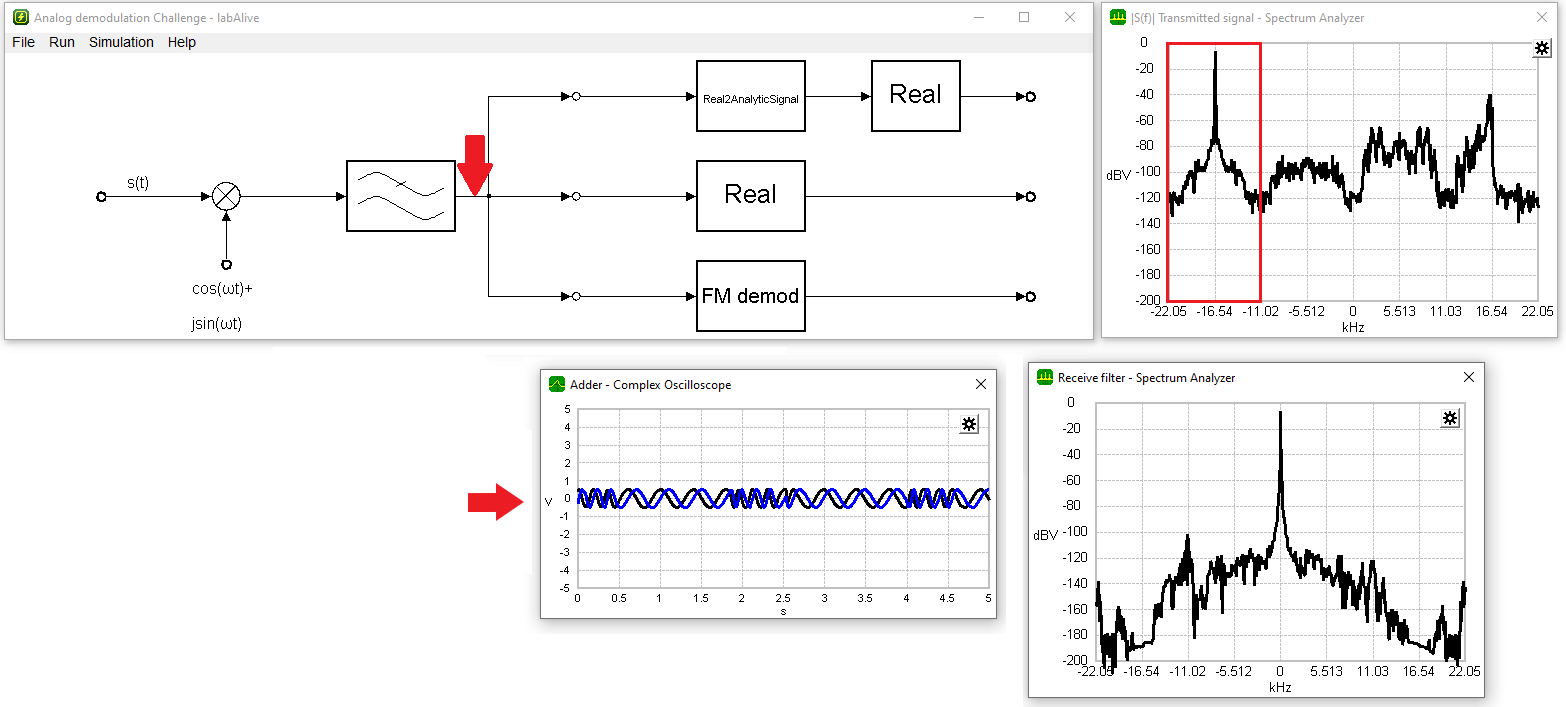
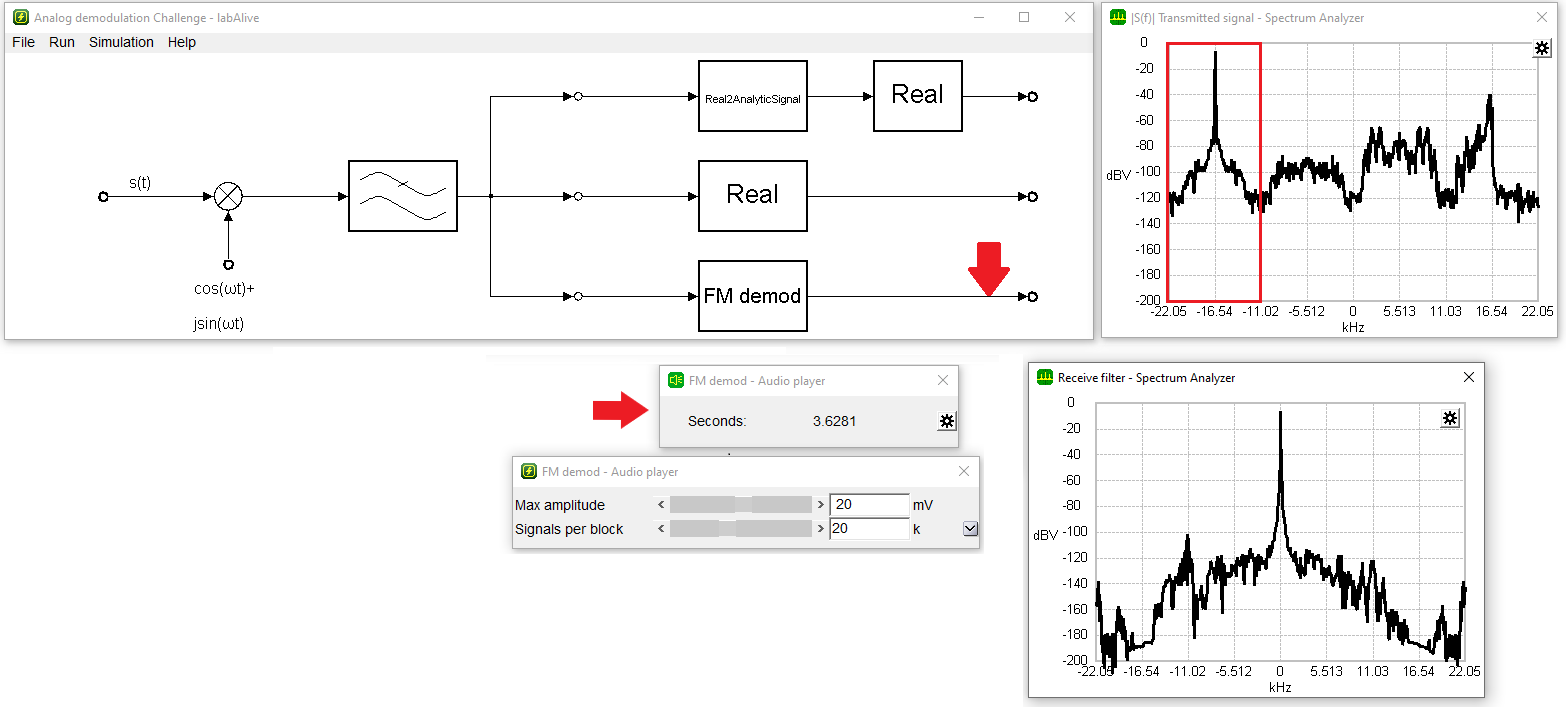
If the appropriate demodulator is selected, you will be able to hear the audio clearly. However, if you hear whistling sounds or crackling noises instead, it indicates that the demodulation method used is not suitable for that particular channel.
Best of luck in finding the right demodulation approach!
Solution
Solution for "Analog demodulation transmission signal 1".
.
Solution for "Analog demodulation transmission signal 2".


